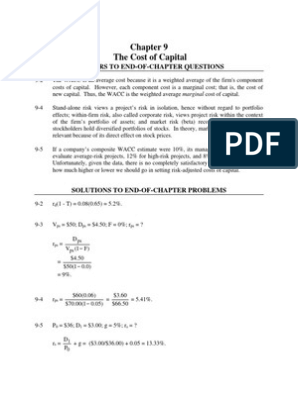0% found this document useful (0 votes)
205 views4 pagesCrocs
The document discusses various methods for valuing Crocs, Inc., including calculating the weighted average cost of capital (WACC), free cash flow to the firm and equity, and net asset value. The WACC was calculated to be 0.39%. Free cash flow projections were negative for 2021-2022 but positive thereafter. Discounting the free cash flows yielded a firm value of $441,994.54. Earnings capitalization valued each share of equity at $0.01, indicating potential undervaluation.
Uploaded by
KagumeCopyright
© © All Rights Reserved
We take content rights seriously. If you suspect this is your content, claim it here.
Available Formats
Download as DOCX, PDF, TXT or read online on Scribd
0% found this document useful (0 votes)
205 views4 pagesCrocs
The document discusses various methods for valuing Crocs, Inc., including calculating the weighted average cost of capital (WACC), free cash flow to the firm and equity, and net asset value. The WACC was calculated to be 0.39%. Free cash flow projections were negative for 2021-2022 but positive thereafter. Discounting the free cash flows yielded a firm value of $441,994.54. Earnings capitalization valued each share of equity at $0.01, indicating potential undervaluation.
Uploaded by
KagumeCopyright
© © All Rights Reserved
We take content rights seriously. If you suspect this is your content, claim it here.
Available Formats
Download as DOCX, PDF, TXT or read online on Scribd
/ 4





















































































